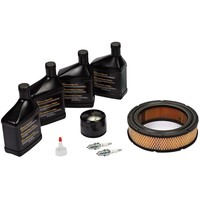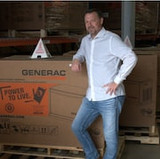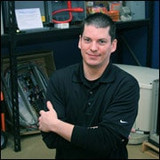When Your Generator Just Won't Start
6th Jun 2018
Electrical power is almost essential for most of us. We run our homes with it, our devices, and so much of our lives and work. Maintaining this power is a must to protect our homes and businesses from all sorts of disasters. This is why we invest in generators, for standby backup power. So, it is understandable to feel frustration, or even panic when a generator just won’t start.
What to Do
How well do you know your generator? You can’t be expected to be an expert, but if you take a little time to learn the basics, you might be surprised at how many problems you can handle on your own without having to call for help. At the very least, you can be certain about whether or not you need the professional service.
Start by getting to know your generator. Research on generators is easy; just start with the internet. With a little searching, you can learn a lot, and may even find your specific model for more accurate information. In fact, if you don’t recall where you placed your generators manual, you may be able to find it in PDF form online. Once you have the information, read through it and keep a copy to help you in the event of an emergency later.
Check the battery. Battery failure is one of, if not the most common reason for generator problems. Batteries fail most often because of lead sulfates; they build up on lead-acid battery plates. The battery acid discharges and coats the plates. Battery cells can also short because of lead debris, or because of an overcurrent in the battery system, resulting in open cells. Much of this can be avoided by replacing the batteries every few years. However, if your system fails, the battery should be one of the first things you check.
Low coolant levels are also common issues. Coolant should be recharged on a regular, recommended basis. It’s not uncommon for owners to forget, however. Coolant leaks leave generators at risk of overheating, which causes them to shut down. To check for a leak, you should look for strange puddles. Some generators have low coolant indicators to help. If this is the problem, you will need a professional to perform a recharge.
Make sure the main control switch is in the right position. There is always a risk of human error, which is how the control switch may be in the off or reset position. There are several possible labels for generator control switch positions—off, reset, on, cool down, etc. So, before doing anything costly or time consuming, if you have recently touched the switch, check it to make sure you put it back in the right place.
Of course, if you’re simply not sure what to do, calling a professional is the best thing to do if your generator won’t start. If you want to learn more about generators, what they do for you, and specific models, you can trust Nationwide Generators to help.




